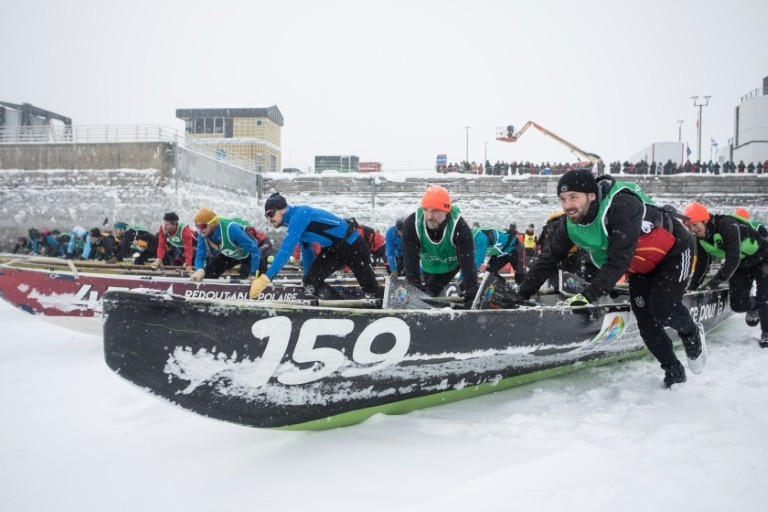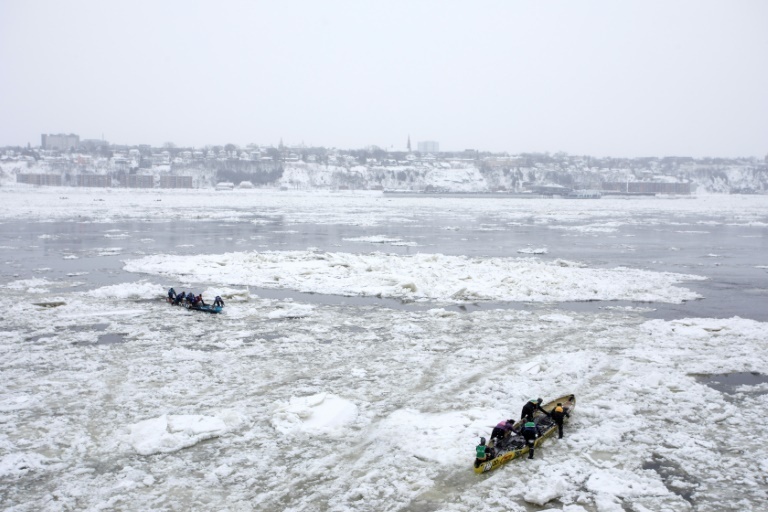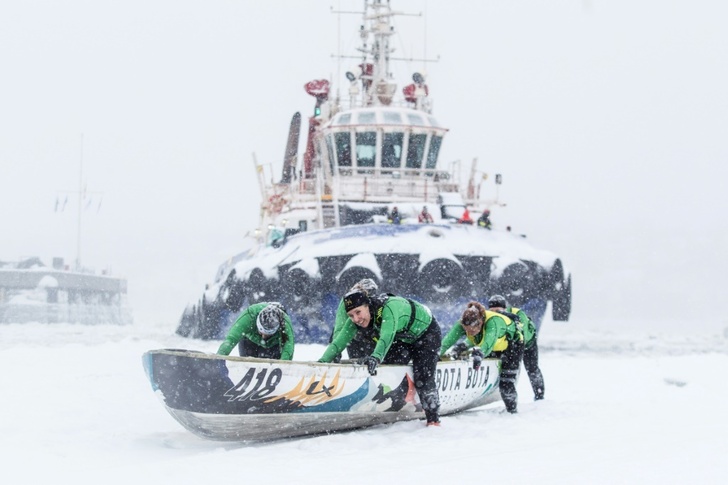Defying a polar freeze, 50 long canoes are lined up at the foot of Old Quebec City, their boaters preparing to brave dangerous ice slabs and swirling currents to cross the St. Lawrence River under heavy snow.
This is no rescue operation or feat of exploration; it's a gruelling test of mettle for competitors in Canada's wild world of ice canoe racing.
At the signal, athletes wearing shoes with metal studs push their boats at full speed onto the river's frozen surface.
One leg is in the canoe, the other is pushing out. When the ice patch gives way to an icy mush under their feet, they jump, somehow, into their boat, drawing their oar and beginning a frenzied scramble.
The objective is to race from the port of Quebec to the city of Levis, on the opposite shore of the river, and back -- a distance of 3.2 kilometers (two miles).
"It's a bit like the World Cup" of canoing on ice, says an enthusiastic Vicki Clouet-Côté, 30, who has been involved in this extreme sport for the past decade.

"It's a sport that unites tradition and determination," explains Martin Roberge, while applying wax to the bottom of his canoe ahead of the race.
- Gaining popularity -
The practice of canoing on ice dates back to the beginning of European colonization in North America, notes the captain of the team from the Naval Reserve of Quebec.
It served as a means of early travel between islanders and the mainland but was supplanted by the arrival of steamboats at the end of the 19th century.
"It has become a sport and even a circuit," says Marie-Eve Jacob, general manager of the Carnaval de Quebec.
"There are canoe races all over the province," she adds, specifying that a women's league has also been added.
A team sport, success in ice canoing is above all about strategy, claims Yves Gilbert, the 71-year-old veteran for whom this extreme practice remains only a "game."
"It's generally not pure physical strength that counts, it's more the strategy, the way of approaching the ice," says the man with weathered features and a warm smile whose role is that of "ice captain," guiding his team from the front of the canoe.
For this 2023 edition, the teams faced particularly severe conditions with heavy snowfall, reduced visibility and temperatures approaching minus 20 degrees Celsius (minus 4 Fahrenheit).

"Some (wore) no hats or gloves," exclaims Bill Mcguinn, a spectator in a purple jumpsuit and a bulky scarf that hides his mustache, from a deck overlooking the race.
Straight from New York, McGuinn couldn't believe his eyes: "It was absolutely crazy. If you've never seen it, you should come here and see it."
maw/tib/amc/mlm/jh
© Agence France-Presse
Your content is great. However, if any of the content contained herein violates any rights of yours, including those of copyright, please contact us immediately by e-mail at media[@]kissrpr.com.
Source: Story.KISSPR.com

